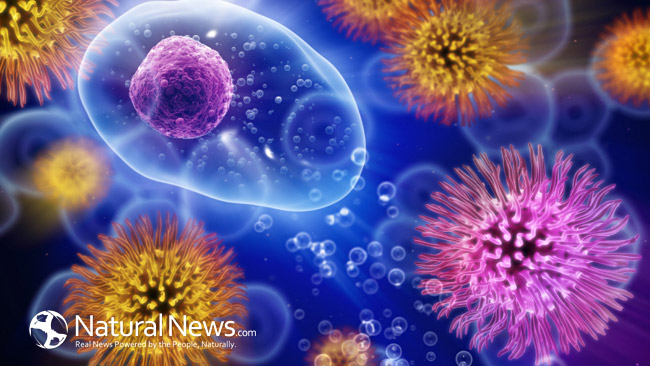In
my relentless pursuit of understanding covid—I have often heard the term, “gain
of function research”. Curious—I looked it up. A definition is difficult to
find and even more difficult to understand. The
Conversation asked four experts in the
field,
What
does gain of function mean?
“Any organism can
acquire a new ability or property, or “gain” a “function.” This can happen
through natural selection or a researcher’s experiments. In research, many
different types of experiments generate functions, and some pose certain safety
and security concerns. Scientists use a variety of techniques to modify
organisms depending on the properties of the organism itself and the end goal.
Some of these methods involve directly making changes at the level of genetic
code. Others may involve placing organisms in environments that select for
functions linked to genetic changes.
Gain of function can
occur in an organism in either nature or the laboratory. Some lab examples
include creating more salt- and drought-resistant plants or modifying disease vectors to produce mosquitoes that
are resistant to transmitting dengue fever. Gain of function can also be useful for environmental reasons,
such as modifying E. coli so that it can convert plastic waste into a valuable commodity.
In the current
debate around SARS-CoV-2, the virus that causes COVID-19, gain of function has
a much narrower meaning related to a virus becoming easier to move between
humans, or becoming more lethal in humans. It is important to remember, though,
that the term “gain of function” by itself covers much more than this type of
research.”
That didn’t help
much. Let’s step back for a moment.
Gain
of function research is not new. It wasn’t always called gain of function. In
fact, it dates back to the 1930’s.
In
2001, when my husband was diagnosed with cancer, one of the tests ordered was a
PET
Scan. Despite working for two
years on an oncology floor of a community hospital, I had never heard of a PET
Scan. The technician was very nice and explained to me that the scan looks for
cancer metastasis. Cancer cells have many more glucose receptors than normal
cells. Cancer cells require 19 times more glucose than normal cells. To prepare
for the PET scan–you fast the night before the scan, then you are given a
mixture containing sugar and radioactive tracers either by mouth or IV—the
cancer cells in your body will grab that sugar faster than any other cells. After
an hour, they scan your body and the radioactive glucose molecules will light
up wherever there is cancer. Only cancer cells can consume glucose at that high
amount because of the extra glucose receptors.
I
was so excited. If doctors KNEW that cancer cells must have sugar to
survive—why couldn’t they starve the cancer cells of sugar and watch them die? Sugar hoarding is a well-known function of a
cancer cell’s biochemistry. And yet—they
give chemotherapy and candy to cancer patients. How many people have even heard
of a PET scan—yet alone how it works as a diagnostic tool.
Here’s
where the gain of function comes in. How does a diabetic regulate their blood
sugar? With insulin. Diabetics test their blood sugar and administer insulin to
regulate it. The goal is the same with cancer. The goal is to open up cancer
cells and allow the insulin and a much smaller dose of chemotherapy (10%) into
the cancer cell to kill it. This is a targeted therapy with much less collateral
damage than giving chemotherapy IV. You get the benefits of chemotherapy
without the horrible side effects because the insulin goes straight to the
cancer cells and the small dose of chemo that is attached kills the cancer. So
you get the benefits without all the terrible side effects. That’s a “gain of
function”.
Imagine
fasting the night before a chemo treatment, getting a fraction of the dose
attached to insulin, and target killing just the cancer cells. Very little side
effects, no death. This therapy isn’t for everyone, and health professionals
must be trained to administer it—but it is safe and effective. Why haven’t
conventional oncologists embraced it?
Turns
out the treatment has been around for quite a while. It’s called Insulin
Potentiation Therapy (IPT). It was considered a “biological
response modifier”
and has been used successfully since the 1930’s to treat various conditions. In fact,
IPT predates chemotherapy.
Dr.
Thomas Lodi has successfully treated patients with IPT for 14 years.
Insulin
is the trojan horse. There is a window of time when the cancer cells can absorb
the sugar before normal cells because normal cells do not have the extra
receptors. This is the therapeutic window for treatment. This is when insulin
plus chemotherapy and other drugs like antibiotics or even targeted biological
therapies like IV vitamin C, curcumin, or resveratrol are most effective. These
botanicals can be used to reduce inflammation and turn off oncogenes. It has
been proven safe and effective time and again.
In
a recent PubMed
article, glucose metabolism was
suggested as a targeted treatment for Covid.
“A recent study published in Cell Metabolism by Codo et al.1 shows that
metabolic rewiring of human monocytes by SARS-CoV-2 infection cultured under
high glucose highly induces viral replication and cytokine production
compromising T-cell response and function. Ultimately, this triggers lung
epithelial cell death and, mechanistically, provides an explanation why people
with diabetes might be more susceptible to develop severe COVID-19.”
Obviously,
you can’t give insulin across the board to everyone. So new treatments have
been developed (assuming with good intentions) to treat cancer and now viruses,
with gain of function research.
Magnetic nanoparticles containing small doses
of chemotherapy were to be used with external magnets to move those particles
directly to the cancer and release them. Once again, this was designed to be
targeted release without the whole-body complications. It is a well-known
function of a cancer cells biochemistry or cellular physiology that assures the
insulin will work. It goes straight to the sugar. But these nanoparticles don’t
always go where they should and actually do travel throughout the body. In
fact, just like insulin, these magnetic particles can also cross the Blood
Brain Barrier. But unlike insulin, it isn’t a good thing. When you can direct these
nanoparticles to change brain chemistry and protein enzymes in the brain—either
internally or externally—that’s a bad thing. Some say the magnetized particles
are designed to work with 5G radiation.
According
to Canadian viral immunologist Dr. Byram Bridle,
“mRNA uses the cells machinery to synthesize proteins that are supposed
to resemble the spike protein of the corona virus, which is what the virus uses
to enter cells via the ACE2 receptor. These proteins are then identified by the
immune system, which builds antibodies against them. The concern many experts
had is that these proteins could accumulate in the body—especially in regions
of high concentrations of ACE2 receptors, like testicles and ovaries.”
Here’s
the thing. Scientists knew, doctors knew, three letter agencies (CDC, FDA)
knew, Dr. Fauci knew—the ACE2 receptors are present all over the body. In addition, we now know that the
nanoparticles do not stay in the shoulder where they inject you—more than 75%
leave the injection site and travel throughout the body. Why? Because ACE2
receptors are all throughout the body. Certain blood pressure meds and statins
actually upregulate (increase) ACE2 receptors.
“Until now we were assuming that these were acting like traditional
vaccines, where they go in the shoulder muscle and they don’t go anywhere
else.”
Dr. Byram Bridle.
You
know what they say about “assuming”.
Do you think that’s why both vaccinated and unvaccinated (but had close contact/exchanged
bodily fluids with vaccinated people) are having so many cardiovascular and
reproductive side effects?
The
side effects are REAL. I’ve talked with so many people in the last two months who
have experienced heart inflammation, pneumonia, blood clots, unexplained
bleeding, and miscarriages. These things alone should be enough to halt this
human experimental insanity.
Does
this nanotechnology provide gain of function? Or is it, as some say, a
biological weapon? Is it designed to work with 5G radiation to control the
human body?
Dr.
Bridle: “We thought the spike protein was a great target antigen, we never
knew the spike protein itself was a toxin and was a pathogenic protein. So by
vaccinating people we are inadvertently inoculating them with a toxin.”
From The
Conversation: “In the past
decade, the United States has developed oversight for research that could be
directly misused for nefarious purposes. This includes policies on “dual-use research of concern” (DURC) and policies on “pathogens of pandemic potential” enhanced to gain transmissibility or virulence.”
Always do your own research. Your life could
very well depend upon it.
Resources
https://theconversation.com/why-gain-of-function-research-matters-162493
https://ar.iiarjournals.org/content/32/6/2229
https://my.clevelandclinic.org/health/diagnostics/10123-pet-scan
https://www.ncbi.nlm.nih.gov/pmc/articles/PMC7936230/
https://www.understandingnano.com/nanotechnology-nanopartiicles-chemotherapy.html





